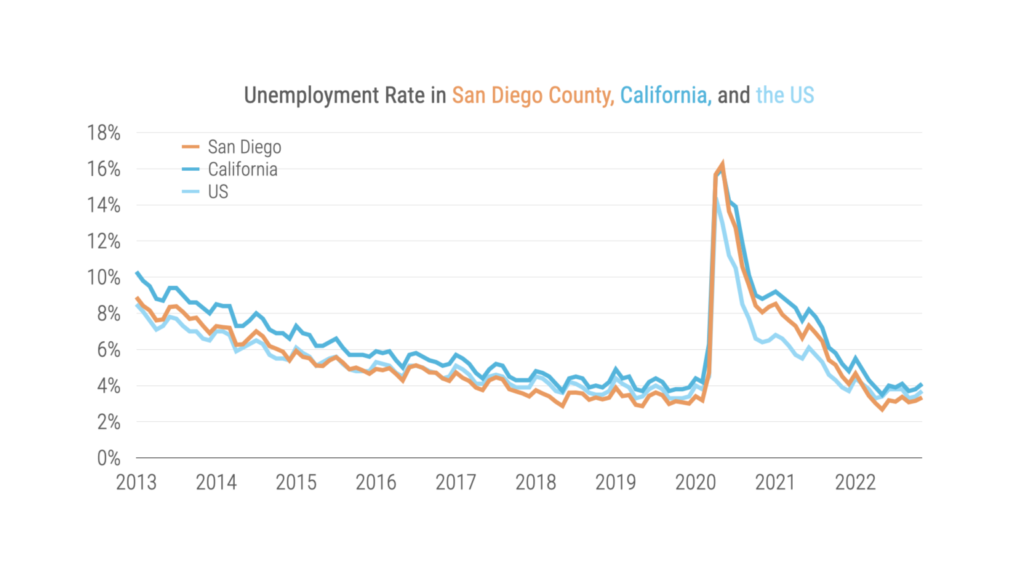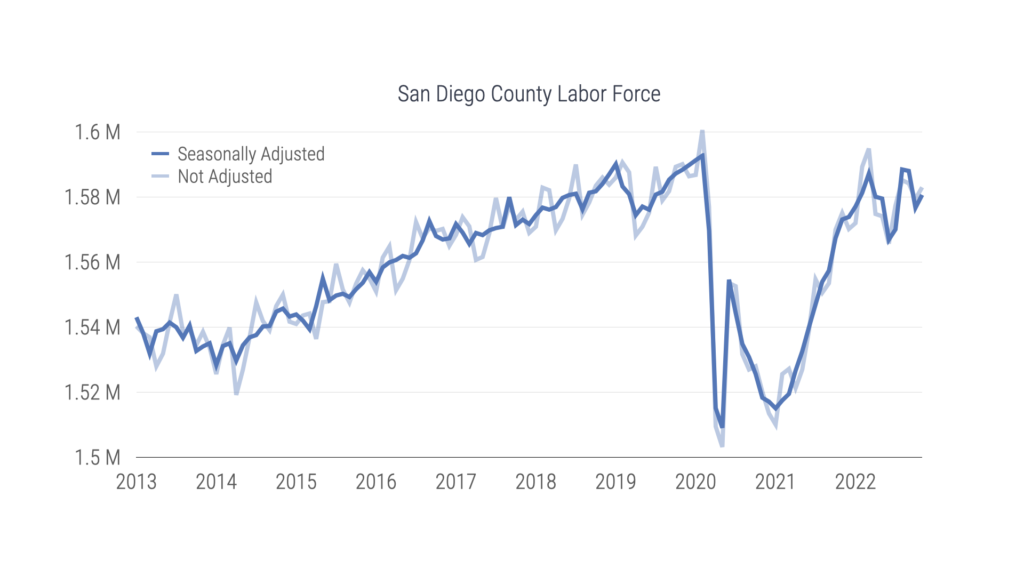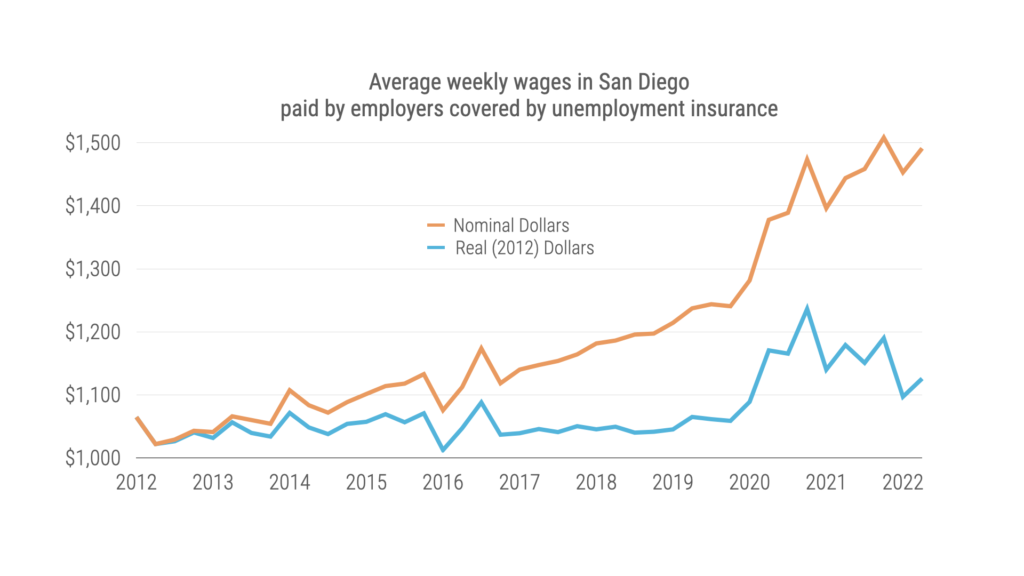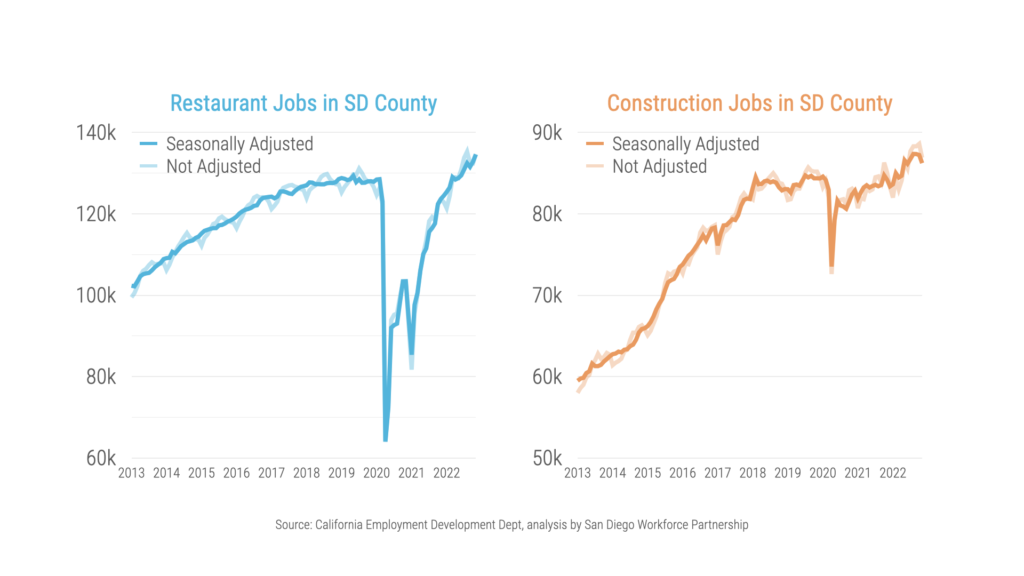Workforce Partnership chief economist Daniel Enemark analyzes November’s labor market trends.
More jobs and more workers in the labor force
The job market remains hot, with 16,100 nonfarm jobs added last month. Nonetheless, the unemployment rate increased last month to 3.3% from a revised 3.2% in October. The increase was greater after adjusting for seasonal effects—3.5% from 3.2% in October. Our rate of 3.3% remains below the California and US averages (4.1% and 3.7%).

The reason the unemployment rate grew when more San Diegans got jobs is that an even greater number of residents joined the labor market. The labor force grew by 3,600 (0.2%) last month, which is good news given that regional businesses still struggle to attract and retain workers.

Phil Blair, executive officer of Manpower San Diego, celebrated the news and urged residents to take advantage of the tight labor market: “16,100 more jobs! It continues to be a worker’s job market as companies continue to hire. How long this will last is anyone’s guess. If anyone wants to be working in the next six months, now is the time to take that job and establish some seniority.”
More please
We need to extend November’s growth in the labor force, both to meet employers’ needs for workers and to reduce inflationary pressure. COVID-19 and the previous presidential administration’s immigration politics have reduced the supply of workers. To extend November’s growth in the labor force we need to welcome more workers, increase public investment in the provision of affordable childcare so that parents can afford to work and increase wages to draw more workers into the labor force.
Yes, wages still need to rise, especially for those who earn the least. While it’s important to rein in inflation, real wages in the region have grown less than 6% since 2012, while productivity grew by 13%. Our economy’s high-income inequality is unethical, and historically, greater income equality contributes to economic growth and political stability, both of which we could use more of at the moment.

Gains and losses
November saw the holiday season’s typical ramp-up in retail (up 2,900 or 2%), led by clothing (up 800, 8%) and general merchandise stores (up 900, 6%). What stands out though was the growth in restaurant employment (up 2,300, 2%), which is unusual for November. Restaurants continue to roar back and even well-surpass pre-pandemic employment. Last month’s restaurant employment was 6,900 (5%) above November 2019.
By contrast, last month’s dip in construction is not a good sign for the region. While the 1,700 (2%) decrease isn’t huge compared to last October, what we really need is significantly more construction employment and a concerted regional effort to put those individuals to work building more housing. The region’s insufficient housing stock is the biggest driver of homelessness, and homelessness takes people out of the labor force at a time when employers need all the workers they can hire. The dip in construction employment is unusual, but not shocking, for November. In the preceding 10 years, employment decreased in 2017, 2018 and 2021.

